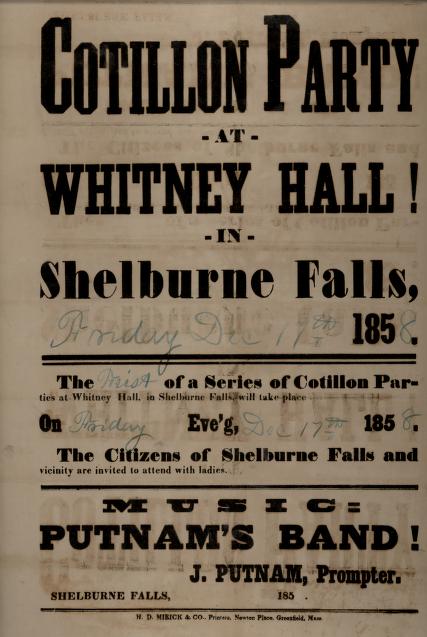




Advanced Search
| Online Collection |
|
|||||||||||||||||||||
|
Dancing was a favorite activity for many early Americans. People from all walks of life, wealthy or poor, city-dwellers or farmers, slave or free, danced. Virginians, remarked an 18th century observer, "will dance or die." A visitor to the United States in 1827 declared she was in danger of being "danced to death." Traditional, European-style contra dances involved long lines of men and women facing one another. Around 1800, a new dance form, known as the cotillion, arrived on the scene. A French import, cotillion dancing was the ancestor of modern square dancing. Four couples danced in a small group, or "square." At first, dancers had to learn and memorize complex steps and movements. By the mid-1800s, however, dancers could rely on a caller, or "prompter," to call out the figures. John Putnam (c.1817-1895) was an accomplished musician and dance prompter, or caller. He was also a well-known and sought-after bandleader. This broadside from 1858 advertises a cotillion dance in Shelburne Falls, Massachusetts, featuring music by Putnam's band and prompting by John Putnam.
|
"Cotillion Party at Whitney Hall! In Shelburne Falls, Friday Dec 17th, 1858"
|
| |
Home | Online Collection | Things
To Do | Turns
Exhibit | Classroom | Chronologies | My
Collection
About This Site | Site Index | Site Search | Feedback


